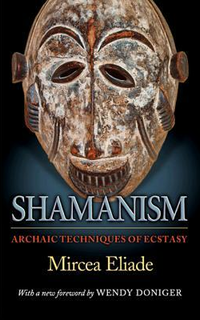Mentions
I read Eliade’s Shamanism during the early stages of research for my book Healing Songs (2006). It’s a long, dense work, and I was expecting a slow slog through academic minutiae and endless footnotes. But, here again, I was shaken up by what I read—and in the aftermath I read stacks of other books about shamanistic practices, from various cultures and time frames. Eliade taught me that shamans provided an ideal type of empowered music-making at the center of every culture where they flourished. And they operated everywhere—Asia, Australia, Africa, the Americas, even Western Europe—relying on almost identical musical practices in every instance.
I eventually came to recognize that much of what I had previously understood about other empowered musicians (bards, griots, troubadours, even rock stars) only made sense when grasped within the context of this broader shamanistic tradition that dates back thousands of years—or, probably, even tens of thousands of years. This involved a huge course of study for me, spanning over the course of many years, with important implications for everything from how I viewed rhythm to my inquiry into the universal touchstones for human music.
